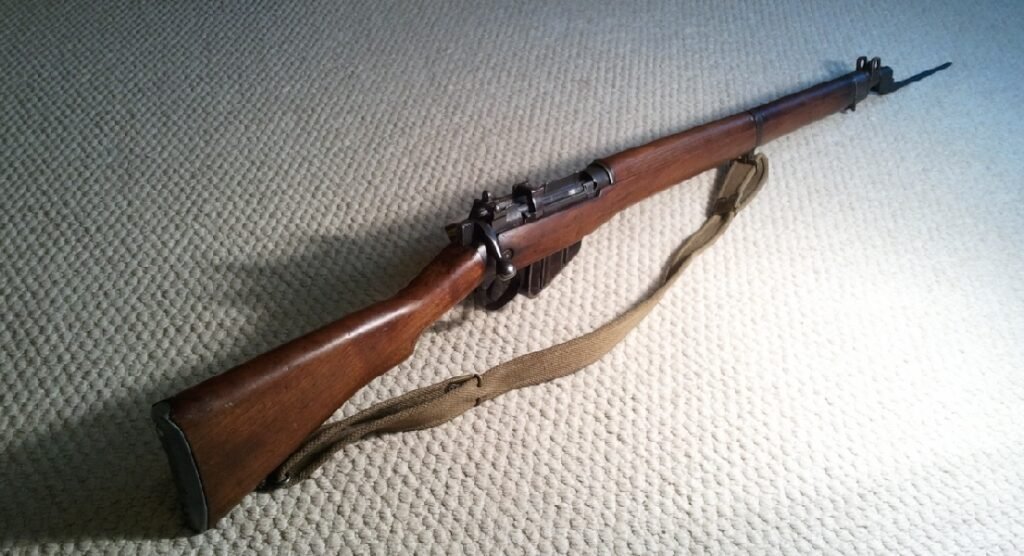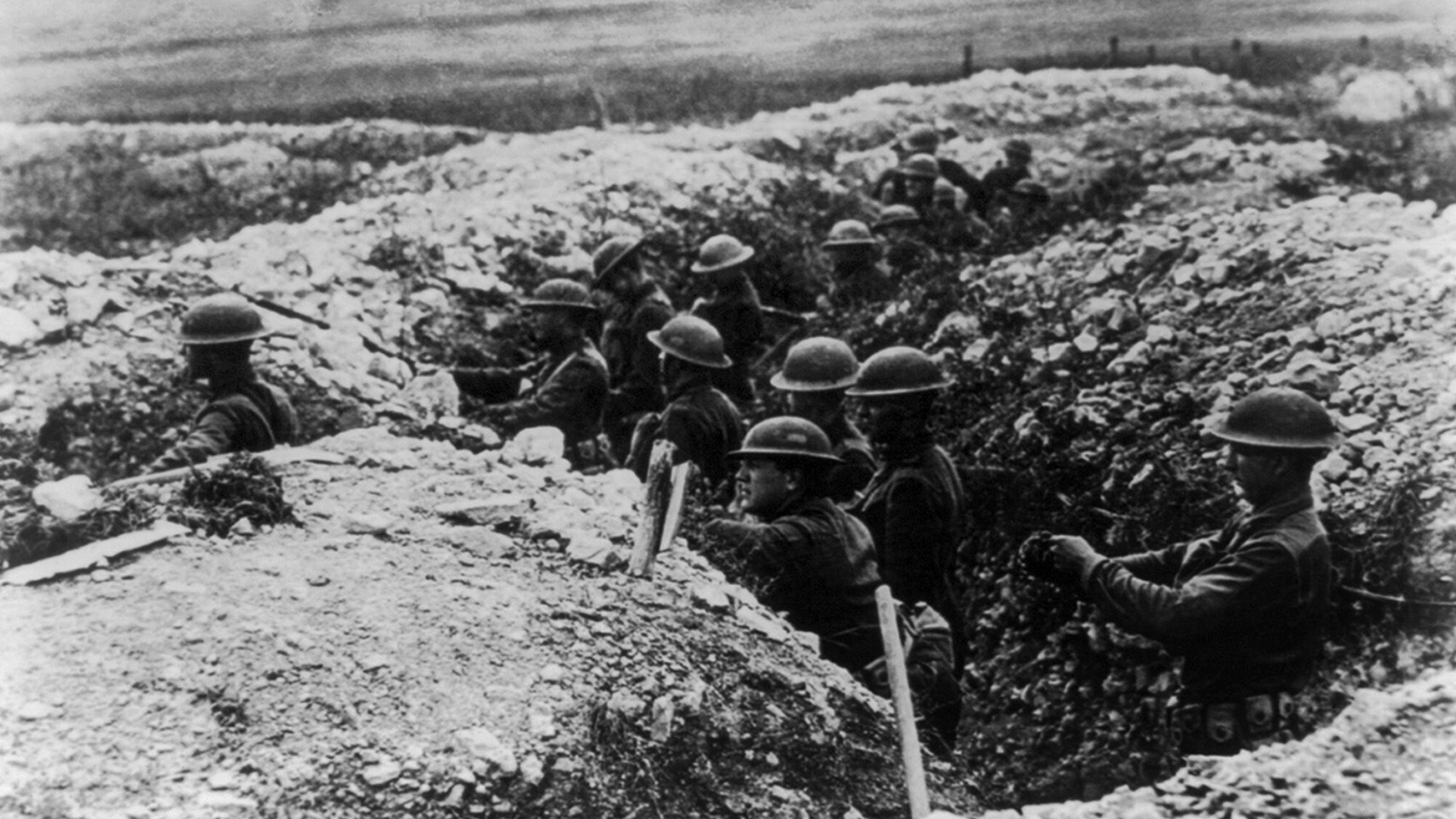‘Over the Top’ and into the Great War
Episode 4 – For the two weeks following the acquisition of the M1 Garand and accessories, I scoured the internet for information about the M1 Garand. There were plenty of photos showing them in use during WWII. Many of these photos also showed soldiers holding carbines.
The M1 Carbine
The M1 Carbine is sort of the younger brother of the Garand. It was also produced in greater numbers than the Garand, or any of the other WWII American small arms. It was much lighter (Approximately 5.2 pounds (2.36 kg) without a magazine) and more compact (35.6 inches (905 mm)) than the Garand and was designed to be used instead of the M-1911 Colt Automatic (which isn’t automatic).
Hitting your target with the Colt takes either expert-level proficiency or dumb luck. It took less training to hit a target with a carbine. In combat zones, starting around mid-1942, the switchover from .45s to carbines began, primarily affecting support troops, such as vehicle crews, artillerymen, and officers, who were typically armed with pistols or submachine guns.
So, I’m seeing pictures of carbines, and this one from Saving Private Ryan captured my imagination.

That photo planted in my brain the idea that maybe I could find a WWII carbine.
I Googled around and one popped up on gunbroker.com for sale (not auction) at just under a thousand dollars. And since it was just going to be that “one more thing”, I jumped on it.

What I learned with this purchase was that, until late in the war, there was no bayonet lug on the barrel (like in the S P R photo above). The presence of one here, at the base of the bayonet, is one of several changes pointing to this being a late-war carbine. The rear sight can also be easily contrasted in the two photos. The earlier carbines are more difficult to find and command much higher prices.
On mine, the serial number on the receiver suggests it was made in October/November of 1943. The receiver is also stamped Saginaw SG, for the Steering Gear Division of General Motors, in Saginaw, Michigan.
The barrel is stamped Inland MFG. DIV, General Motors 1-44”, meaning the barrel was made in January 1944. There were many types of companies producing the carbine, including, but not limited to, a jukebox company, a typewriter company, and a business machines company.
Having two WWII weapons was all it took to admit that, okay, I’m a collector, but just of WWII U.S. Army non-automatic guns.
The Lee-Enfield Rifle
That lasted exactly two days. I was on the gunbroker.com site and noticed a WW2 No. 4 Mk 1 Lee-Enfield rifle. The Lee-Enfield rifle has a cachet and mystique to me. This one was several hundred dollars, which seemed reasonable. Based on its serial number, this one was produced in 1942. Okay. Just one more thing. I jumped on it.

The Lee-Enfield rifle is a renowned British bolt-action rifle that served as the standard issue firearm for the British and Commonwealth military forces for much of the 20th century, beginning with the Boer War, the Great War, World War II, and beyond.
The Lee-Enfield rifle was developed from the earlier Lee-Metford rifle, which combined the bolt-action design by James Paris Lee with the rifling system designed by William Ellis Metford. The Lee-Metford, adopted in 1888, used black powder ammunition, but the development of smokeless powder led to the need for a new design.
In 1895, the Lee-Metford was modified to use smokeless powder and was adopted as the Lee-Enfield Mark I, named after the Royal Small Arms Factory in Enfield, where it was produced.
The Lee-Enfield features a bolt-action mechanism with a rear-locking, rotating bolt. It is known for its fast-cycling action, allowing a trained soldier to fire up to 20-30 aimed rounds per minute. The rifle had various models, with lengths typically around 44 inches and weights around 9 pounds.
This model that I purchased – the No. 4 MK 1 Lee-Enfield variant – was the successor to the original model. This model was introduced during WWII and featured simplified production methods to speed up manufacturing. It had a heavier barrel and an aperture sight for improved accuracy.
Spanning the Great War and World War II
So, I’ve not only abandoned my self-defined category of “U.S. WWII arms collector” by dipping a toe into the British pool but had jumped the fence from semi-auto to bolt-action. Now, I’m up to three guns, which even I had to admit, must mean I’m some sort of collector.
But if I was a collector, it was not with any sense of direction. In fact, at that point, not even the value, if any, of having a direction was a consideration.
Common advice for someone starting in collecting is to define what that collection is to encompass. Some people may have that sense from the start. But I wonder how many go the eclectic route like I did, where the limits define themselves over time.
Setting limits at the start isn’t necessarily any more confining. I would say that it isn’t mandatory to decide anything, except whether you want to buy that one thing you’re looking at. And maybe that’s all you’ll ever want. But if you keep going, a point is reached where you gain a sense of what’s appropriate for your collection.
It did start to dawn on me, however, that there seems to be a lot to know about these things I’m buying. (I had no idea!) Having these artifacts of military history was a novelty, and that’s all I cared about. I had not set out to collect, per se. If that had been the case, I would have studied them as a subject before buying them. I was way too impatient for that.
Here’s the thing. Had I learned what features make a collectible highly collectible, I may have set a higher bar for what I was buying and either bought fewer items with my limited resources or half-heartedly made lower-priced purchases.
What I’ve come to realize is that while not all my acquisitions are top-of-the-line, they’re affordable ones. That translates into a broader market of potential buyers when the time comes to sell it off. In my ignorance, I think I got lucky in most cases, whether it was arms or equipment.
I made some regrettable purchases along the way, but I have to admit, just as much, if not more, can be learned from the bad ones, as from the good ones.

2 Comments